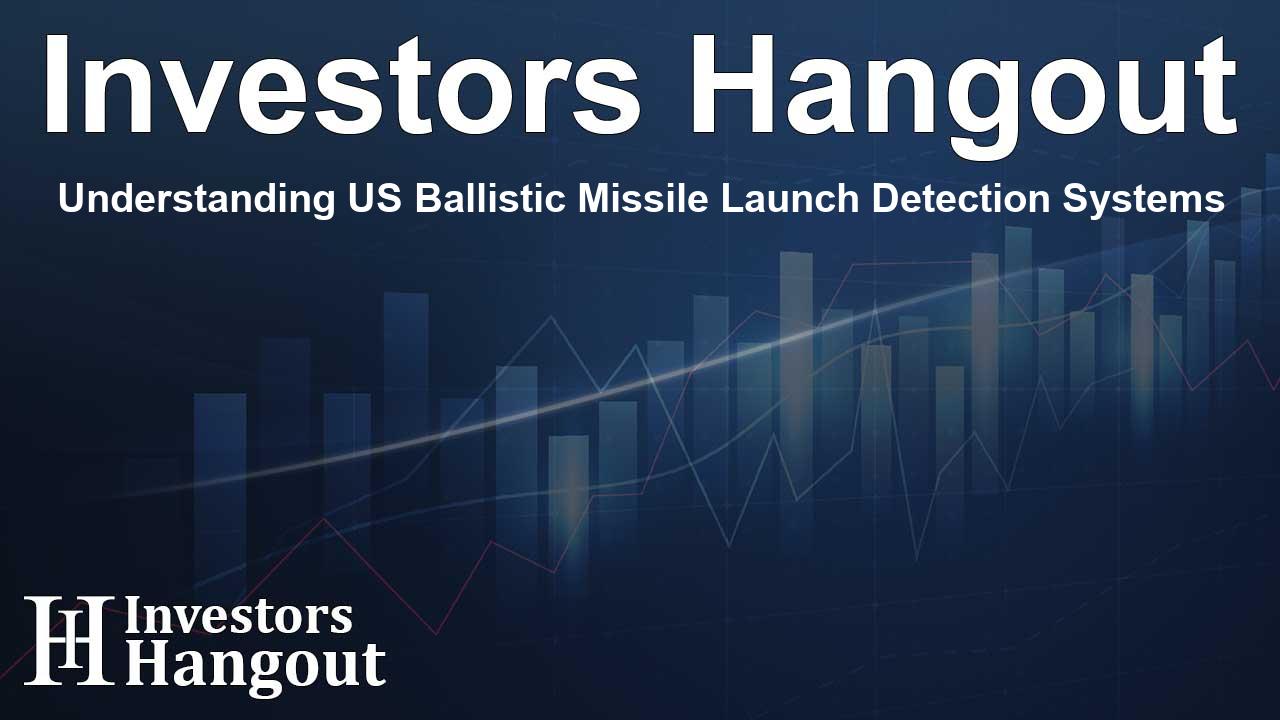Understanding US Ballistic Missile Launch Detection Systems

How the US Tracks Ballistic Missile Launches
The United States has developed an intricate web of sensors and technology designed to spot, track, and identify ballistic missile launches. This capability has been refined over decades into an unblinking global network, ensuring rapid response to potential threats.
The Sensor Network
At the core of this detection system are high-tech satellites operated by the U.S. Space Force. In geostationary orbit, six Lockheed Martin (NYSE: LMT) and Northrop Grumman (NYSE: NOC) satellites form a space-based infrared surveillance system, known as SBIRS. These satellites are tasked with hunting missile launch signatures across the globe.
How Detection Works
These satellites, along with smaller satellites positioned in lower orbits, utilize various sensors to detect missile launches almost instantly. From primitive weapons like Scuds to advanced intercontinental ballistic missiles (ICBMs), these technologies provide detailed information about missile activity.
William Alberque, a fellow at the Henry L. Stimson Center, highlights the significance of integrating multiple detection methods, stating that a combination of video, infrared technology, and synthetic aperture radar leads to a comprehensive understanding of missile launches. This data processing, conducted at incredible speed, significantly enhances the ability to gather intelligence on missile activity.
Understanding Rocket Signatures
Each rocket motor emits distinct exhaust gases that vary in temperature, depending on the missile's fuel type and design. These unique characteristics, referred to as signatures, help in rapidly identifying the type and model of a launched missile.
Ground-Based Sensors
Complementing the satellite systems, the U.S. employs massive solid-state early warning radars located in regions like the United States, Canada, and Britain. Together, this network is capable of calculating essential metrics such as the missile type, launch angle, trajectory, velocity, size, and potential landing point.
Involvement of Various Entities
Beyond the Space Force, several U.S. government agencies play vital roles in the missile detection framework. The National Geospatial-Intelligence Agency, U.S. Strategic Command, and the Missile Defense Agency, among others, collaborate to enhance the efficacy of missile tracking and analysis.
Regional military commands also participate, particularly during critical assessments of missile launches. Some notifications, especially for shorter-range missiles, can be automated, while more serious threats necessitate human intervention and thorough analysis.
Recent Incidents and Analysis
In cases like the recent Russian strike near Ukraine's city of Dnipro, experts found no indication of a nuclear threat. This lack of concern arose from the absence of unusual military preparations, such as the movement of warheads or an uptick in nuclear activity. According to Alberque, such scenarios would generate significant telltale signs of potential nuclear weapon deployment.
History of Early Warning Systems
The concept of early warning systems traces back to the 1950s, initially developed to detect bomber formations. As technology progressed, these systems evolved to spot missiles, utilizing vast ground-based radars. These radars are intrinsically linked to defensive frameworks that include missile interceptors, some even armed with nuclear capabilities.
The Future of Missile Detection
The U.S. Space Force is currently overseeing an ambitious program with an investment of nearly $15 billion aimed at deploying advanced early warning satellites. This initiative is branded as Next Generation Overhead Persistent Infrared, with the first geostationary satellite expected to arrive by 2025 and polar-orbiting counterparts set for launch in 2028. These advancements will significantly bolster the U.S.'s missile detection and response capabilities.
Frequently Asked Questions
What technologies are used to detect ballistic missile launches?
The detection of ballistic missile launches relies on satellites equipped with infrared sensors, ground-based radars, and various detection algorithms that analyze launch signatures.
Who operates the missile detection systems in the US?
The U.S. Space Force primarily operates the missile detection systems, alongside other agencies such as the National Geospatial-Intelligence Agency and U.S. Strategic Command.
How quickly can the US detect a missile launch?
The US missile detection systems can identify and track ballistic missile launches within seconds of the event occurring.
What happens during a missile launch notification?
Missile launch notifications can be automated for short-range threats, while serious alerts typically require human analysis and decision-making to assess the risk and recommend a response.
How is the future of missile detection evolving?
The US Space Force is investing significantly in the development of advanced early warning satellite systems to enhance global surveillance and response capabilities against missile threats.
About The Author
Contact Lucas Young privately here. Or send an email with ATTN: Lucas Young as the subject to contact@investorshangout.com.
About Investors Hangout
Investors Hangout is a leading online stock forum for financial discussion and learning, offering a wide range of free tools and resources. It draws in traders of all levels, who exchange market knowledge, investigate trading tactics, and keep an eye on industry developments in real time. Featuring financial articles, stock message boards, quotes, charts, company profiles, and live news updates. Through cooperative learning and a wealth of informational resources, it helps users from novices creating their first portfolios to experts honing their techniques. Join Investors Hangout today: https://investorshangout.com/
The content of this article is based on factual, publicly available information and does not represent legal, financial, or investment advice. Investors Hangout does not offer financial advice, and the author is not a licensed financial advisor. Consult a qualified advisor before making any financial or investment decisions based on this article. This article should not be considered advice to purchase, sell, or hold any securities or other investments. If any of the material provided here is inaccurate, please contact us for corrections.
